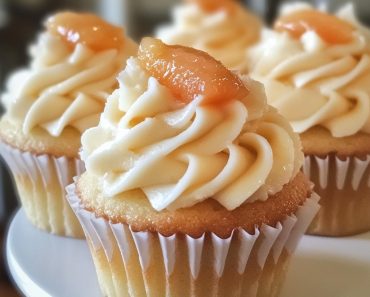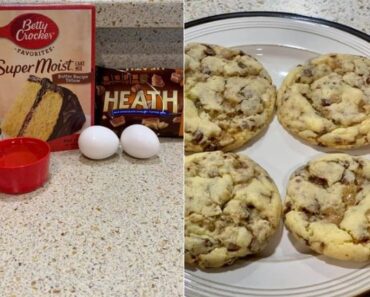
Welcome to a delightful journey of baking with a twist! This Cottage Cheese Cake is a cherished recipe passed down to me by an Arab chef, and it has quickly become a favorite in my kitchen. With a harmonious blend of creamy cottage cheese and a tender, buttery crust, this cake is the epitome of comfort and elegance. Perfect for a cozy family gathering or a sophisticated tea party, this cake is sure to impress with its unique flavors and textures.
Ingredients Overview
Let’s take a closer look at the ingredients you’ll need to create this delightful cottage cheese cake:
For the Dough:
- Eggs: 2 large eggs, bringing structure and richness.
- Sugar: 1 cup + 2 tablespoons, for the perfect sweetness.
- Heavy Cream: 3 tablespoons, adding a touch of luxury.
- All-Purpose Flour: 4 ½ cups, the base of our dough.
- Baking Powder: 1 ½ teaspoons, for a light, fluffy texture.
- Unsalted Butter: ¾ cup (1 ½ sticks), melted, for a rich, buttery flavor.
For the Cottage Cheese Filling:
- Cottage Cheese: 3 cups, providing a creamy, tangy filling.
- Eggs: 3 large eggs, adding richness and binding the filling.
- Heavy Cream: ⅔ cup (36% fat), enhancing the creaminess.
- Sugar: 1 ½ cups, balancing the tang of the cottage cheese.
Step-by-Step Cooking Instructions
Preheat the Oven:
Preheat your oven to 350°F (180°C). Grease a baking tray with butter to ensure an easy release.
Mix the Eggs and Sugar:
In a bowl, crack the eggs and add 1 cup + 2 tablespoons of sugar. Whisk until well combined and the mixture is light and fluffy.
Add Heavy Cream:
Pour in the heavy cream and mix it into the egg and sugar mixture until fully incorporated.
Combine Dry Ingredients:
Sift the flour and baking powder into the bowl. Stir everything together until a dough forms.
Incorporate Butter:
Melt the butter and let it cool slightly. Add the melted butter to the dough and mix until well incorporated.
Prepare the Dough in the Tray:
Transfer the dough to the greased baking tray. Use your hands to create slightly thicker edges around the tray to prevent the filling from overflowing.
Prepare the Cottage Cheese Filling:
In another bowl, combine the cottage cheese, eggs, heavy cream, and 1 ½ cups of sugar. Mix everything together until smooth.
Add the Filling:
Pour the cottage cheese filling over the dough in the baking tray, spreading it evenly.
Bake the Cake:
Place the tray in the preheated oven and bake for about 45 minutes, or until the top is golden brown and the filling is set.
Cool and Serve:
Once baked, remove the tray from the oven and let the cake cool before slicing and serving.
Enjoy your delicious cottage cheese cake!
Storage and Reheating Tips
Storage:
Store any leftovers in an airtight container in the refrigerator. This cake will stay fresh for up to 5 days.
Reheating:
To reheat, simply place a slice in the microwave for about 20-30 seconds or until warm. You can also enjoy it cold, straight from the fridge.
Helpful Tips for Enhancing the Recipe
Use Full-Fat Cottage Cheese:
For a richer filling, opt for full-fat cottage cheese.
Room Temperature Ingredients:
Ensure your eggs and cream are at room temperature for easier mixing.
Butter Cooling:
Allow the melted butter to cool slightly before adding to the dough to prevent curdling.
Uniform Spreading:
Spread the filling evenly to avoid uneven baking.
Check for Doneness:
Use a toothpick to check the center of the cake; it should come out clean when the cake is done.
Golden Top:
For an extra golden top, you can brush a little melted butter over the cake halfway through baking.
Flavor Variations:
Add a splash of vanilla extract or a sprinkle of cinnamon to the filling for extra flavor.
Nonstick Spray:
If you don’t have butter, use nonstick cooking spray to grease the tray.
Gentle Mixing:
Mix the filling gently to avoid over-beating, which can cause the texture to be too dense.
Proper Cooling:
Let the cake cool completely in the tray to set properly before slicing.
Popular Questions and Answers
Can I use low-fat cottage cheese?
Yes, but the filling may be less creamy.
Can I substitute the heavy cream?
Half-and-half or whole milk can be used, but the texture will be less rich.
Can I use a different type of sugar?
Yes, but the sweetness level and texture may vary.
How can I prevent the edges from burning?
You can cover the edges with foil if they brown too quickly.
Can I freeze this cake?
Yes, wrap it tightly in plastic wrap and freeze for up to 2 months.
Can I add fruit to the filling?
Yes, small berries or chopped fruit can be added for a fruity twist.
What type of flour works best?
All-purpose flour is recommended, but cake flour can also be used for a lighter texture.
Is it necessary to sift the flour?
Sifting ensures a lighter dough, but it is not mandatory.
How can I make the filling smoother?
Blend the cottage cheese filling with a hand mixer or blender for a smoother texture.
What if I don’t have baking powder?
You can use a mixture of baking soda and cream of tartar as a substitute.
Can I use salted butter?
Yes, but reduce the added salt in the recipe.
How can I add a crunchy top?
Sprinkle some sugar on top before baking for a crunchy crust.
What’s the best way to slice the cake?
Use a sharp knife and wipe it clean between cuts for neat slices.
Can I make mini cakes instead?
Yes, use smaller baking dishes and adjust the baking time accordingly.
How do I avoid a soggy bottom?
Ensure the edges of the dough are thick enough to contain the filling.
Secrets for Achieving Culinary Perfection
Quality Ingredients:
Always use the freshest and highest quality ingredients you can find.
Accurate Measurements:
Use precise measurements for best results, especially with baking powder and flour.
Baking Time:
Adjust baking time based on your oven, as temperatures can vary.
Even Mixing:
Ensure even mixing of the batter and filling for uniform texture and flavor.
Cooling:
Allow the cake to cool in the tray to firm up properly.
Taste Testing:
Taste the filling before baking to adjust sweetness or flavor if needed.
Patience:
Give the cake time to set and cool; this improves texture and flavor.
Creative Additions:
Experiment with flavor additions like citrus zest or spices.
Proper Greasing:
Ensure the baking tray is well-greased to prevent sticking.
Layer Thickness:
Keep the dough layer slightly thicker around the edges to hold the filling better.
Avoid Overmixing:
Mix the dough until just combined to keep it tender.
Baking Position:
Bake in the center of the oven for even heat distribution.
Check Halfway:
Check the cake halfway through baking to prevent over-browning.
Serving Temperature:
This cake is best served slightly warm or at room temperature.
Enjoy the Process:
Cooking is an art—enjoy every step and have fun with it!
By following these tips and techniques, you’ll be able to create a cottage cheese cake that’s not only delicious but also visually stunning and sure to impress your family and friends. Happy baking




















